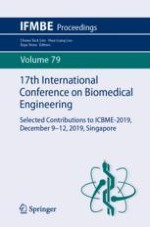2021 | OriginalPaper | Buchkapitel
HydroGEV: Extracellular Vesicle-Laden Hydrogel for Wound Healing Applications
verfasst von : Qingyu Lei, Thanh Huyen Phan, Phuong Le Thi, Christine Poon, Taisa Nogueira Pansani, Irina Kabakowa, Bill Kalionis, Ki Dong Park, Wojciech Chrzanowski
Erschienen in: 17th International Conference on Biomedical Engineering
Aktivieren Sie unsere intelligente Suche, um passende Fachinhalte oder Patente zu finden.
Wählen Sie Textabschnitte aus um mit Künstlicher Intelligenz passenden Patente zu finden. powered by
Markieren Sie Textabschnitte, um KI-gestützt weitere passende Inhalte zu finden. powered by
